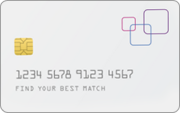The content is accurate at the time of publication and is subject to change.

Last year $16 billion was stolen from 12.7 million Americans, but the good news is that’s down slightly compared to 2013 according to a new study. This dip is good news for consumers, yet it doesn’t mean the fight is over. There’s a new fraud victim every two seconds. Despite the decline, there is still plenty of risk for consumers, especially to students who appear to be particularly vulnerable to cyber thieves.
“Despite the headlines, the occurrence of identity fraud hasn’t changed much over the past year, and it is still a significant problem,” said Al Pascual, director of fraud & security, Javelin Strategy & Research. “Consumers, financial institutions and retailers are all taking aggressive steps, yet we must remain vigilant. The criminals will continue to find new ways to commit fraud, so taking advantage of available technology and services to protect against, detect and resolve identity fraud is a must for all individuals and corporations.”
The 2015 Identity Fraud Study, which was released by Javelin Strategy & Research. While identity fraud was down 3% in 2014, it’s down 11% from 2012. Also, new account fraud--when an account is opened in your name without you knowing it-- hit a record low.
The declines are attributed to the combined efforts of consumers, retailers and the banking industry to reduce risk, along with monitoring and protection systems that have been put in place.
The one-two punch: data breaches and identity theft
The numbers also show that there is a link between data breaches and identity theft, finding that two-thirds of fraud victims had also previously had their data compromised during a data breach leaving them feeling wary about shopping at retailers and big box stores. In fact, 28% said that they avoided retailers after experiencing fraud.
Students beware
While students are the least concerned about fraud, they should be, with 15% of those affected by fraud being significantly impacted with levels falling in the moderate to severe range. They are also less likely catch it when it happens, with 22% reporting that they found out about fraud after being denied credit or from a debt collector---three times higher than in other cases. When it comes to familiar fraud where someone you know steals you identity, students are four times more likely to be victims when compared with other consumers.
The 12th Annual 2015 Identity Fraud Study took place in October 2014 and surveyed 5,000 U.S. consumers.






